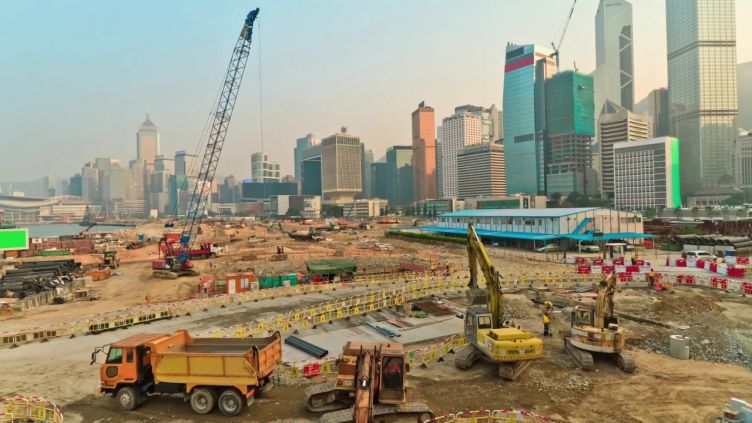Dr Maurizio Guadagnini
School of Mechanical, Aerospace and Civil Engineering
Senior Lecturer
+44 114 222 5757
Full contact details
School of Mechanical, Aerospace and Civil Engineering
Room C109f
Sir Frederick Mappin Building (Broad Lane Building)
Mappin Street
Sheffield
S1 3JD
- Profile
-
By investigating innovative ways to reinforce our concrete structures, my work helps to make our infrastructure more sustainable and resilient.
Dr Maurizio Guadagnini
Maurizio studied his undergraduate degree at the University of Bologna, and completed his PhD in our Department as a Marie Curie fellow. He stayed on as a post-doctoral researcher and was appointed a lecturer in 2005.
He works to create and maintain an active and lasting collaboration between industry and academia - facilitating the application of his technological developments into construction practices by contributing to guidelines for the use of new methods and materials in European Design code.
He is an active member of Task Group 9.3 of the International Federation for Structural Concrete (fib) and he has been involved in several national and international network groups and collaborative projects.
He is responsible for the management of the European-funded Marie Curie Network, EN-CORE, an extensive research and training initiative involving 11 academic and industrial partners that has a total budget of €1.7M.
- Research interests
-
Maurizio’s research focuses on the experimental investigation and use of advanced composites as reinforcing materials for concrete structures.
Steel is traditionally used to reinforce concrete, but it corrodes when exposed to oxygen, high temperatures and moisture, which can damage structures.
Maurizio’s looks for opportunities where steel can be replaced with a composite material such as Fibre Reinforced Polymers (FRP). FRP is made of basalt fibres, which is three times stronger and five times lighter than steel, doesn’t corrode and requires less repair and maintenance, with fewer associated costs.
This contributes to the sustainability of construction, as structures are more economical over their lifetime.
Carbon fibre can also be used to strengthen existing structures, which has applications in disaster-prone areas where structures can be strengthened before, or rehabilitated after earthquakes.
Maurizio’s work also extends into design philosophy and the development of design recommendations for the ongoing improvement of codes of practice used in Europe and throughout the world.
- Publications
-
Journal articles
- Durability and degradation mechanisms of GFRP reinforcement subjected to severe environments and sustained stress. Construction and Building Materials, 170, 637-648. View this article in WRRO


- Long-term performance of GFRP bars in concrete elements under sustained load and environmental actions. Composite Structures, 190, 20-31. View this article in WRRO


- Strut-and-Tie Modeling of Reinforced Concrete Deep Beams. Journal of Structural Engineering, 144(2). View this article in WRRO


- Behaviour of unconfined and FRP-confined rubberised concrete in axial compression. Construction and Building Materials, 147, 388-397. View this article in WRRO


- Short and long-term cracking behaviour of GFRP reinforced concrete beams. Composites Part B: Engineering, 77, 223-231.


- Mechanical Characterization of Basalt FRP Rebars and Long-Term Strength Predictive Model. Journal of Composites for Construction, 19(2), 04014037-04014037.


- Bond behaviour of substandard splices in RC beams externally confined with CFRP. Construction and Building Materials, 50, 340-351.


- Standardised double-shear test for determining bond of FRP to concrete and corresponding model development. Composites Part B Engineering, 55, 277-297.


- Deflection behaviour of FRP reinforced concrete beams and slabs: An experimental investigation. Composites Part B: Engineering, 43(5), 2125-2134.


- Serviceability limit state of FRP RC beams. Advances in Structural Engineering, 15(4), 653-664.


- Predicting the shear resistance of RC beams without shear reinforcement using a Bayesian neural network. International Journal of Reliability and Safety, 6(1-3), 82-109.


- Design guidelines for FRP reinforced concrete structures. Proceedings of the Institution of Civil Engineers Structures and Buildings, 164(4), 255-263.


- Shear resistance of FRP RC beams: Experimental study. Journal of Composites for Construction, 10(6), 464-473.


- Failure-mode-hierarchy based design for reinforced concrete structures. Structural Concrete, 6(1), 23-32.


- Shear performance of FRP reinforced concrete beams. Journal of Reinforced Plastics and Composites, 22(15), 1389-1407.


- Design philosophy issues of fiber reinfored polymer reinforced concrete structures. Journal of Composites for Construction, 6(3), 154-161.


- Durability and degradation mechanisms of GFRP reinforcement subjected to severe environments and sustained stress. Construction and Building Materials, 170, 637-648. View this article in WRRO
- Research group
-
Concrete Structures
Earthquake Engineering Group
- Grants
-
Past Grants
Gre.a.te.r.s (GREen Advanced TEchnologies for the Retrofitting of masonry Structures) will develop a new generation of strengthening and rehabilitation solutions for masonry structures by using environmentally friendly natural fibre meshes embedded in an inorganic lime-mortar matrix.
- Professional activities and memberships
-
- Member of the RILEM Technical Committee MSC – Masonry Strengthening with Composite Materials
- Member of the International Federation for Structural Concrete TG 9.3 "FRP Reinforcement for Concrete Structures"
- Member of the International Federation for Structural Concrete TG 4.5 "Bond Models"
- Member of IRAAC (International Research on Advanced Composites in Construction)
- PhD opportunities
Seismic Strengthening Of RC Using External Lateral Post-tensioning
The project will investigate this technique both experimentally and analytically and develop models for its application in vulnerable buildings.
Design And Safety Philosophy For Reinforced Concrete
The main aim of this research is to develop a safety and design philosophy that accounts for the long-term behaviour of RC structures. This will require use of structural reliability theory as well as uncertainty modelling.
Automated Concrete Casting
This project will investigate robotic placement of concrete.
If you're interested in one of these projects, or would like to self-propose a project, please contact Maurizio at the above email. Current PhD opportunities in the department can be viewed here.

